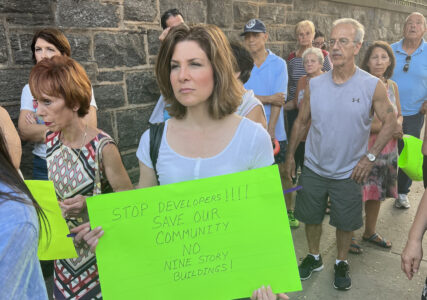Pothole city!
Comptroller Scott Stringer has just released the results of a study his office conducted and it turns out that the Belt Parkway has the dubious distinction of topping the list of New York City roadways that have generated property damage claims for the years 2010 through 2015.
The study, which was conducted by using the data-driven tool created by Stringer’s office, Claimstat Alert, determined that over that time period, 706 claims were filed by motorists with the city with respect to damage their vehicles allegedly suffered as a result of potholes on the Belt, well above the Grand Central Parkway’s 433 and the Brooklyn-Queens Expressway’s 422.
Stringer’s office also reported on the number of pedestrian trip and fall claims filed with the city during the time period in question, with Manhattan streets bearing the brunt of claims filed.
“Potholes are serious trouble,” said Stringer. “They deflate tires, break axles, and twist ankles, often at a significant financial cost to the city.”
The report didn’t come as a surprise to local drivers.
“I used the Belt for so many years, and the stretch from Coney through Sheepshead Bay was always the worst stretch in regards to potholes,” said Ridgeite Ray D. “It’s about time they fix the damn road. It’s costing drivers lots of money in tire replacement. I always wondered if they are keeping it this way because there are so many tire repair shops in that stretch.”
“The Belt Parkway potholes are a menace and can lead to serious accidents, not to mention car damage,” added Frank S.
The damage caused by potholes has increased over the years across the board. The report, released on Thursday, July 30, revealed in total there have been over 12,000 claims for damage to cars and trucks over the period of the study, and close to 6,000 personal injury claims. This has resulted in nearly $138 million dollars paid out in settlements over the six-year span.
Nonetheless, repair times have not kept pace. The average time to close a pothole work order in the first four months of Fiscal Year 2015 was 6.7 days, nearly triple the 2.4 days it took in the previous year. The Department of Transportation (DOT) filled over 74,000 potholes in the first four months of FY 2015.
“Filling potholes remains an uphill battle,” commented Stringer, despite the “proactive approach [taken by the city] to improving pothole maintenance, including pothole blitzes, targeted repaving and material enhancements.”
In his report, Stringer lists possible solutions, such as exploring a complete reconstruction of certain city streets and continuing to pioneer the use of new and more durable materials such as rubberized asphalt and recycled plastic in road resurfacing.
“While city streets might never be completely rid of potholes, we are working with DOT to make streets safer for New Yorkers whether they’re on two wheels, four wheels, or on foot,” Stringer said. “I applaud DOT for the great work they do, and we look forward to continuing provide them with the data they need to get ahead – and stay ahead – of New York City’s pothole problem.”

 Not in our backyard! Dyker rallies to prevent ‘out of character’ nine-story building from being built
Not in our backyard! Dyker rallies to prevent ‘out of character’ nine-story building from being built  Housing going up at Angel Guardian Home site: School also slated to be built at location
Housing going up at Angel Guardian Home site: School also slated to be built at location